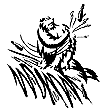| Dec '97/Jan '98 |  |
Vol. 2, No. 6 |
Brewing the Beer StylesDoppelbockBy Ray McNeill Once again, I'm preparing you faithful readers with a beer to nurse you through those frigid winter evenings in the Brewing News readership area, where temperatures reportedly reach a hundred degrees below zero (with the frozen winds, of course). On nights such as these, a doppelbok is a beautiful thing to have. Those of you who homebrew will, of course, refer to my article on Maibok, which you undoubtedly clipped out and saved. What is a doppelbok? It's a malty lager beer with: * Color - deep copper to brown. I like to think of the color of an old penny, brown with red or ruby notes. * Alcohol - STRONG, around 7-7.5% by volume. Don't operate farm machinery! * Carbonation - conventional Spaten Optimator is widely available and can serve as a benchmark for the style, but as with all imported beer, look out for old beer. Here's a trick on buying any filtered beer of questionable age. Carefully remove the bottle from the shelf and hold it up to light. Turn the bottle horizontally and give it a little shake. Observe the bottom of the bottle. If you see anything (I mean anything) other than beer or bubbles floating upward, don't buy it. Remember, this is for filtered beer (most beer is). If the beer is unfiltered or bottle conditioned the label will undoubtedly say so. All Right, Bucko! Let's make some doppelbok. * Malt - I have repeatedly advocated the use of Moravian barley malt (Coors uses it!), but it is sometimes hard to find and is always more expensive. Basically, any "pilsner" type malt will work, but I'm skeptical of English ones. I think the quality of English lagers would satisfy anyone's curiosity about English "pilsner" malt. One perennial GABF winner uses Briess malt and this will certainly make a fine doppelbok. Munich malt is used liberally in doppelbok. Use a lightly colored one if there is a choice, because I'm not sure the darker ones will convert. Large amounts can be used, 30-80%. Crystal malt can be used in the 5-10% range. Use darker crystal malt if given a choice. Chocolate malt can be used sparingly, not to exceed 2%. A total of 17-19# will get you in the ballpark for 5 gallons. * Water/Mashing - Munich water is very soft, but a little carbonated. If your water is hard, boil it before using, or dilute it with distilled water. Gypsum can be used, but Munich waters are quite low in sulfates. CaCl2 (calcium chloride) is commonly used. One half ounce total CaCl2 divided two thirds for mash and one third for sparge should get your pH close if your water is pH neutral. Single infusion mashing will work well here. If you wish, upward infusion may be achieved by withholding some of your mash water and gradually diluting the mash to a conventional grist composition. A target saccharification temperature is 151-152ºF. Decoction may be employed, with a protein rest of 122º, and a 40% decoction to starch conversion. Decoction may yield a slightly better, true-to-style brew, but be forewarned. If you don't have the tools, it's a real pain. Extract brewers might use unhopped amber and dark extract mixed that are clearly designated for lager beer. 12-14# should do. * Hops - Hallertauer, Tettnanger, or both should be used. If Hallertauer is unavailable, try its children, Mt. Hood or Liberty. A target of 22 IBUs will do, or about 8 alpha "units" (oz hops X % alpha) for 5 gallons. One oz total finishing hops at end-of-boil should help. * Yeast - Wyeast # 2206 , # 2124, and #2308 are highly recommended. Remember to propagate as per the directions on the package because you're asking a lot from the yeast. Ferment around 50o, allowing the temperature to rise to 55-58º for the last day or two of fermentation to reduce diacetyl. Condition at 38º. * Packaging - Priming is last choice. If you own kegs, you may put top pressure on the keg to carbonate. Your doppelbok will be ready to drink faster if you do. You may elect to kraüsen with a highly respiring young pitched wort and this may yield a slightly better beer, but it will take longer to drink the beer. Allow 9-12 days for fermentation and at least 4 weeks total processing time. Six weeks will be better. Here's a recipe to try. Prost! Ray McNeill brews great beer at his brewery in Brattleboro, VT.
Copyright 1997, Great Lakes Brewing News. No material herein may be reprinted without permission of the Great Lakes Brewing News Distributed On the W3 For personal, non-commercial enjoyment and use only. Cheers! |
Features
- Niagara Tradition Holds Grand Opening - Brewing the Beer Styles
|


